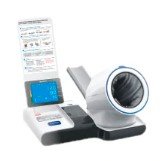Importing Phlebotomy Supplies into the United States: Regulations and Requirements
Summary
- Understanding the specific Regulations and requirements for importing phlebotomy supplies into the United States is essential to ensure compliance with US standards in the medical lab industry.
- There are several key Regulations and requirements that must be followed, including FDA approval, proper labeling and packaging, and adherence to importation laws.
- By paying attention to these Regulations and requirements, medical labs can ensure that they are using safe, effective, and compliant phlebotomy supplies in their operations.
Introduction
Importing phlebotomy supplies into the United States is a crucial aspect of running a medical lab. Phlebotomy supplies, such as needles, tubes, and collection devices, are essential for collecting blood samples from patients for diagnostic testing. However, in order to ensure compliance with US standards in the medical lab industry, specific Regulations and requirements must be followed when importing these supplies.
Regulations and Requirements
FDA Approval
One of the most important Regulations that must be followed when importing phlebotomy supplies into the United States is obtaining approval from the Food and Drug Administration (FDA). The FDA is responsible for ensuring the safety and effectiveness of medical devices, including phlebotomy supplies. Before importing any phlebotomy supplies, manufacturers must submit their products for FDA review and approval.
Proper Labeling and Packaging
Another key requirement for importing phlebotomy supplies into the United States is ensuring that the products are properly labeled and packaged. The labels on phlebotomy supplies must include important information such as the name of the product, the manufacturer's information, and instructions for use. Additionally, the supplies must be packaged in a way that protects them from damage during shipping and storage.
Adherence to Importation Laws
In addition to FDA approval and proper labeling and packaging, importers of phlebotomy supplies must also adhere to US importation laws. This includes ensuring that the products are imported through approved ports of entry and that all necessary customs documentation is completed accurately. Failure to comply with importation laws can result in fines, delays, and even the seizure of the products.
Quality Control and Testing
Once phlebotomy supplies have been imported into the United States, it is essential for medical labs to implement Quality Control measures to ensure that the products meet US standards. This includes testing the supplies for safety, accuracy, and reliability before using them on patients. By conducting rigorous Quality Control testing, medical labs can ensure that they are using high-quality phlebotomy supplies in their operations.
Training and Education
Finally, another important requirement for importing phlebotomy supplies into the United States is ensuring that lab staff are properly trained and educated on the proper use of the supplies. Phlebotomy is a delicate procedure that requires skill and precision, so it is essential for staff to receive training on how to use the supplies safely and effectively. By providing ongoing education and training, medical labs can ensure that their staff are following best practices in phlebotomy procedures.
Conclusion
Importing phlebotomy supplies into the United States is a complex process that requires careful attention to detail and adherence to specific Regulations and requirements. By obtaining FDA approval, ensuring proper labeling and packaging, adhering to importation laws, implementing Quality Control measures, and providing training and education for staff, medical labs can ensure compliance with US standards in the medical lab industry. By following these Regulations and requirements, medical labs can provide safe, effective, and high-quality care to their patients.

Disclaimer: The content provided on this blog is for informational purposes only, reflecting the personal opinions and insights of the author(s) on the topics. The information provided should not be used for diagnosing or treating a health problem or disease, and those seeking personal medical advice should consult with a licensed physician. Always seek the advice of your doctor or other qualified health provider regarding a medical condition. Never disregard professional medical advice or delay in seeking it because of something you have read on this website. If you think you may have a medical emergency, call 911 or go to the nearest emergency room immediately. No physician-patient relationship is created by this web site or its use. No contributors to this web site make any representations, express or implied, with respect to the information provided herein or to its use. While we strive to share accurate and up-to-date information, we cannot guarantee the completeness, reliability, or accuracy of the content. The blog may also include links to external websites and resources for the convenience of our readers. Please note that linking to other sites does not imply endorsement of their content, practices, or services by us. Readers should use their discretion and judgment while exploring any external links and resources mentioned on this blog.
